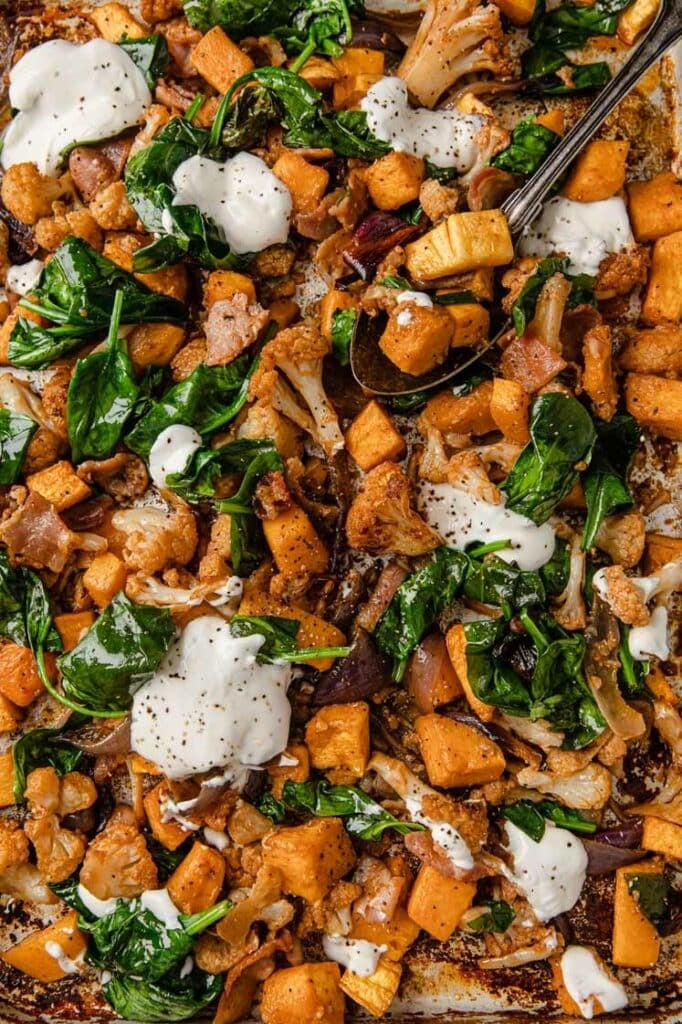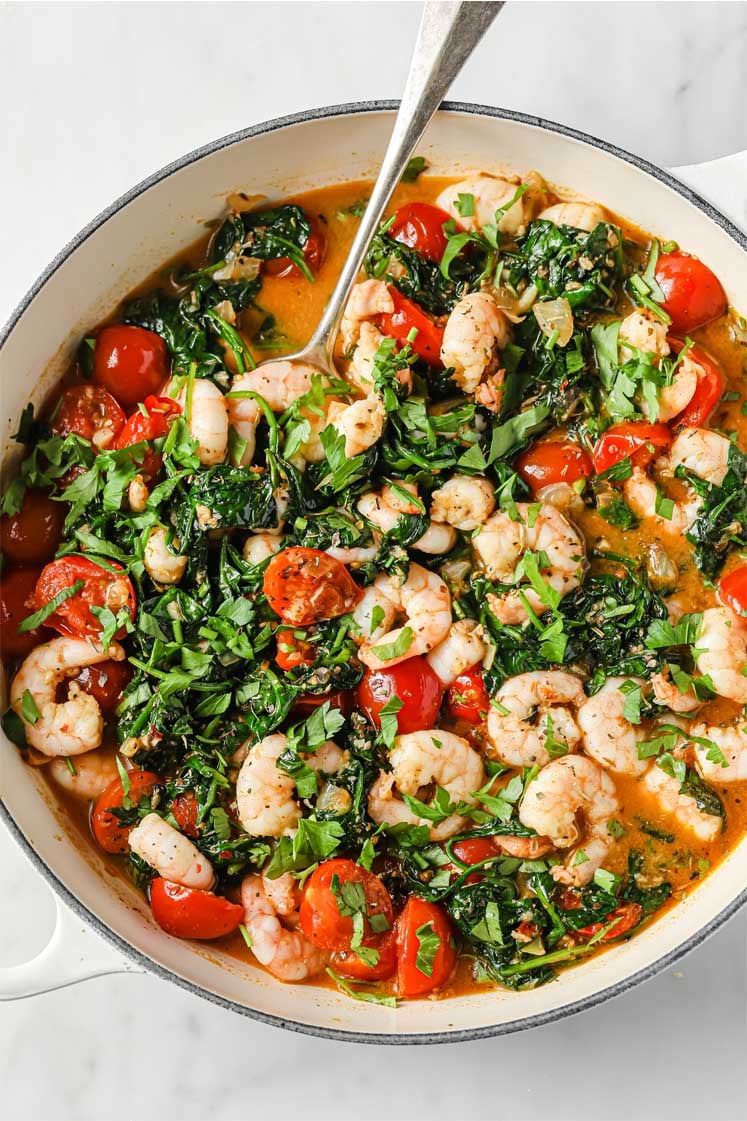In today’s hectic world, a weekly plan for meal-prepping vegetables can help save time and money. It can help foster a healthy family, ease budget strains and curtail excess kitchen waste from spoiled vegetables.

Creating a routine of meal-prepping vegetables can help lay the cornerstone for a balanced family diet and a manageable grocery budget. Busy parents juggling numerous roles may find convenient prepackaged and fast foods lure them towards less healthy, more expensive food options.
Yet, with some planning and effort once a week, the route to nutritious meals and snacks becomes easier. This practice not only promotes healthier eating habits but also ensures that your family is consuming a variety of vegetables throughout the week. And this may set you on the path toward a healthier family, a lighter budget, and a more sustainable lifestyle.
Benefits of meal-prepping vegetables
Washing, cutting and storing your vegetables before you need them offers various benefits to your household. Here are four reasons to start.

Saves time
A stash of ready-to-go vegetables can significantly reduce meal preparation time during hectic weekdays. Imagine coming home after a long day and having all the ingredients ready to cook a delicious, healthy meal in minutes. Invest a few hours one day to save time throughout the week, making weekday evenings less stressful and more enjoyable.
Saves money
Buying and prepping vegetables in bulk saves money in the long run. Store your veggies in budget-friendly storage containers so it’s easy to curb the temptation to order takeout or opt for prepackaged, processed foods, which are often more expensive and less healthy.
The USDA projects food prices will rise by 5.8% yearly. American households must either increase their food budgets or find ways to cut their food costs. Meal-prepping allows you to take advantage of sales and bulk buying, which can significantly reduce your grocery bills.
Easier to eat healthy
With prepped vegetables at hand, adding more greens into meals requires less effort, promoting a balanced diet. This convenience makes it easier to incorporate vegetables into every meal, whether it’s a quick stir-fry, oven-roasted veggies, a salad, or a side dish. It’s a simple way to boost the family’s vegetable intake and foster healthier eating habits.

Reduces stress
Having prepped vegetables readily available can significantly reduce the stress associated with meal planning and cooking. Knowing that a key part of your meal is already taken care of allows for a more relaxed approach to mealtimes, making it easier to enjoy cooking and dining experiences.
Reduces food waste
Meal prepping minimizes food spoilage and waste, aligning with a more sustainable living. It encourages using every bit of purchased produce, which is both eco-friendly and budget-friendly. By planning your meals and prepping your vegetables, you can ensure that nothing goes to waste, contributing to a more sustainable lifestyle.
Selecting the best vegetables for meal prep
Selecting the right vegetables for meal prep can optimize both nutrition and taste. Aim for vegetables that retain their texture and flavor over several days.
Sturdy vegetables like broccoli, carrots, and bell peppers hold up well. Their firm texture prevents them from becoming mushy.
Root vegetables such as sweet potatoes, beets, and turnips are perfect when roasted, boiled, or mashed. The sweet potato and red pepper soup combines sweet potatoes and bell peppers, simmered and blended into a hearty meal. You can also add sturdy veggies like carrots and celery to enhance the texture and taste.

Cruciferous vegetables like cauliflower and Brussels sprouts stay fresh when prepped. Their robust nature suits multiple cooking methods.
Leafy greens like kale and spinach work well for salads. Opt for varieties that resist wilting when stored.
For your convenience, consider the below for the best prep method for a specific vegetable:
- Broccoli – steaming, roasting
- Carrots – raw, steaming
- Sweet potatoes – roasting
- Bell peppers – raw, roasting
- Spinach – raw (salads)
- Cabbage – blanch, freeze
- Kale – salads, sautéing
- Cauliflower – roasting, steaming
- Brussels sprouts – roasting
- Zucchini – blanch, freeze
Storage tips: Keep prepped vegetables in airtight containers. This preserves freshness and prevents spoilage.
Some vegetables need quicker consumption. Avocados and tomatoes are best added just before eating.
By choosing wisely, meal-prepping vegetables becomes efficient. Select versatile and resilient options to ensure delicious and nutritious meals throughout the week.
How to start meal-prepping vegetables
Successful meal prepping takes some planning. Use these tips for success.
Buy on sale
Watch for sales on fresh or frozen vegetables. Get in the habit of meal planning with sales flyers to create meals around vegetables on sale.
Visit local big box stores to buy in bulk. Stock up on staple frozen vegetables for soups, stews and casseroles. This strategy not only saves money but also ensures that you always have vegetables on hand, even when fresh produce is not available.
Buy in season
If you plan to prep and serve your family more fresh, raw vegetables, buy them locally when they’re in season. Visit farmers markets, the fresh produce section of your supermarket or grow your own potager garden.

Meal prepping fresh vegetables to serve raw in salads or with dip is easy. Just wash, slice and serve — no cooking required. Seasonal vegetables are often more flavorful and nutritious, and buying them in season can save you money.
“My favorite meal-prepping vegetable is carrots because their vibrant orange color and natural sweetness add flavor to every dish. They’re a cost-effective ingredient that helps me create delicious and budget-friendly meals.”
— Cindy Gordon, Happy Food, Healthy Life
Preserve vegetables
Preparing vegetables to serve through the year can help your family get nutritious veggies even when they aren’t in season. Try canned, preserved and dehydrated meals and snacks to see which options your household most enjoys. Preserving vegetables can also be a fun family activity, and it ensures that you always have healthy options available.
Batch prep your veggies
Minimize the time required to prep vegetables by scheduling once-a-week veggie prep sessions to support your weekly meal planning. For example, wash and slice all the onions that you bought on sale. Then, portion them into one-cup portions to freeze or dehydrate. This method ensures that you have prepped vegetables ready for any meal, reducing the time and effort needed to prepare meals during the week.

Raw veggies snack packs
Once a week, create snack packs of fresh veggies for your family to save time when making lunches and snacks for school or work. This way, you can grab one pack of prepared veggies each evening. Try a combination of celery, carrots and raw broccoli. These snack packs are not only convenient but also encourage healthy snacking habits.
Invest in good-quality storage containers
Invest in airtight containers, zip-top bags and glass jars that keep prepped vegetables fresh. Quality containers are a worthy investment as they keep vegetables fresh for longer, reducing waste. Proper storage is crucial to maintaining the freshness and nutritional value of your prepped vegetables.
Vary prepping techniques
Explore different preparation methods such as chopping, dicing, blanching, roasting or even fermenting vegetables to cater to diverse meal plans. Each technique can bring out unique flavors and textures, making meals more enjoyable. Mixing prepping methods keeps meals interesting and caters to different tastes and textures. Experimenting with different techniques can also make meal prepping more enjoyable and less monotonous.
Involve the family
Make meal prepping a family activity. It’s a fun way to spend time together, lighten the workload and instill healthy eating habits early on. Involving children in meal prepping can also be an educational experience, teaching them about nutrition and cooking skills.
Common mistakes when meal-prepping vegetables
Ready to try your hand at prepping vegetables for next week’s meals? Before you start, learn the common mistakes to avoid and what to do instead.

Over-prepping
Avoid prepping more vegetables than can be consumed before they spoil. Start with a slightly smaller amount than you’ll need and prepare more the next time if needed. Over-prepping can lead to waste, which defeats the purpose of meal prepping.
Improper storage
Use the right storage method for your vegetables. For example, store long-shelf-life root vegetables in a cool, dry place and in proper containers to maintain freshness. Improper storage can lead to premature spoilage. Different vegetables have different storage requirements, so it’s important to know how to store each type properly.
Incorrect Cooking Techniques
Some veggies have specific needs to bring out their best. For instance, carrots should be thawed before cooking to ensure even heating. In contrast, frozen cabbage can be directly added to soups, stews, or stir-fries. It thaws quickly while cooking, saving you time and enhancing your dishes with minimal effort.

Lack of variety
Include a variety of vegetables to prevent meal fatigue and ensure a balanced nutrient intake. Experiment with different veggies each week to keep meals exciting and nutritious. A diverse selection of vegetables can make your meals more interesting and nutritious.
Wrong vegetables, wrong season
When prepping veggies before a meal, select versatile vegetables with a longer shelf-life post-prepping, like carrots, bell peppers and broccoli. These vegetables act as workhorses in various meals throughout the week.
“Choose the right vegetables! Some vegetables, like spinach or other leafy greens, wilt quickly, so it’s better to prepare them before eating. Others, like root vegetables and cruciferous veggies, are the best for meal prepping. Cut them into as even sizes as possible so they cook evenly.”
— Shruthi Baskaran-Makanju, Urban Farmie
Final thoughts
At first, meal prepping for the week ahead may seem difficult. However, the many benefits of starting a meal-prepping routine are worth the effort. With a bit of practice, you’ll find that meal prepping becomes second nature, and the time and effort you invest will pay off in numerous ways.
To make weeknight meals less chaotic and more enjoyable, try simple strategies like picking up groceries when they’re on sale, buying in bulk, and choosing seasonal produce. These tips help prevent common meal-prep mistakes, such as over-prepping, and keep your veggies fresh until you’re ready to use them.

Additionally, familiarizing yourself with the proper cooking techniques for each vegetable can transform chaotic evenings into relaxing family time. For example, mastering how vegetables can be utilized in stir-fries, soups, and sheet-pan dinners not only expands your culinary repertoire but also enhances the flavor and nutrition of your meals.
Meal prepping can also be a creative outlet, allowing you to experiment with new recipes and cooking techniques. The benefits of prepping vegetables for meals ahead of time ripple extends beyond the meal itself, helping to meet goals of a budget-friendly, healthy and eco-conscious lifestyle.
Portions of this article originally appeared on Food Drink Life.
























Leave a Reply